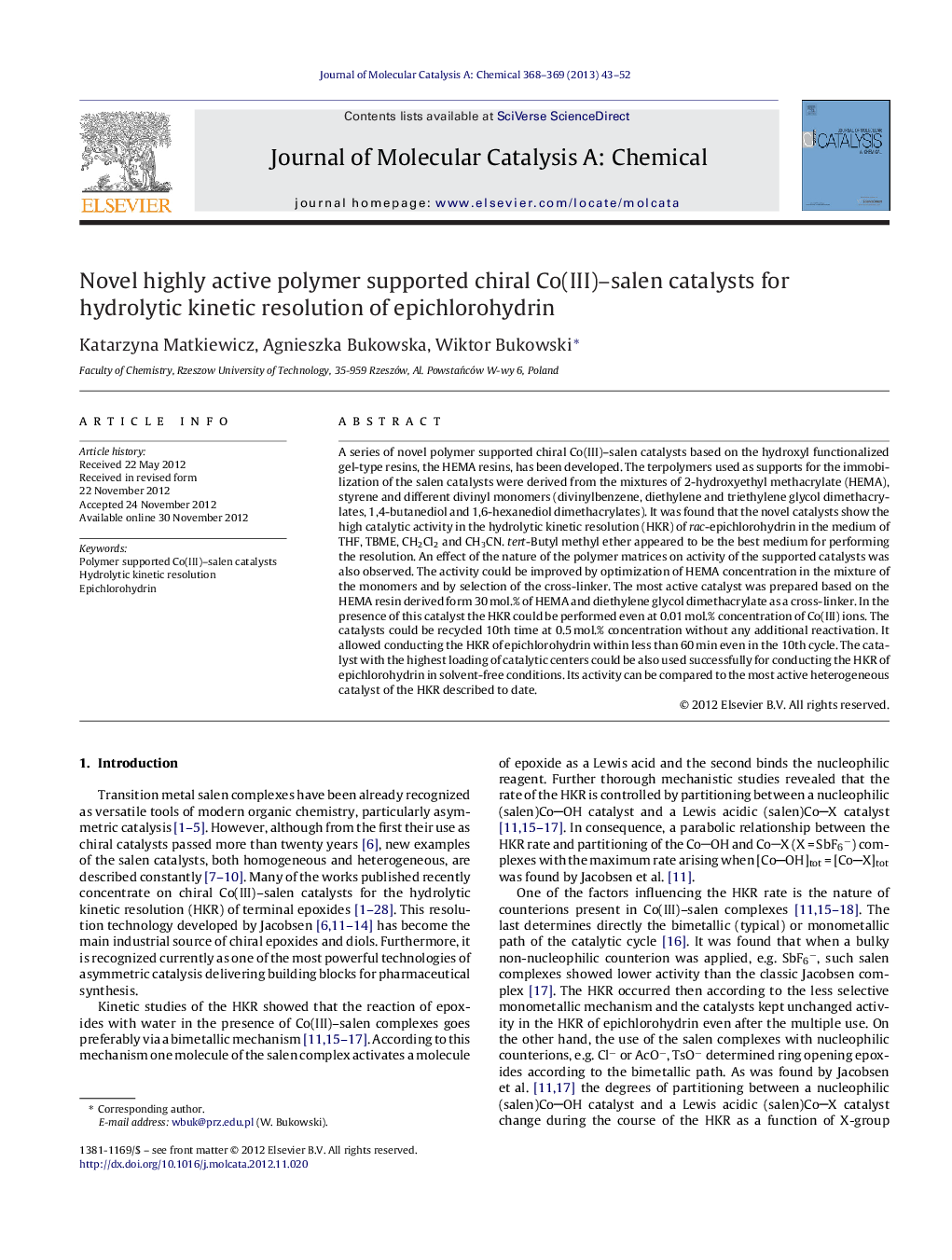| Article ID | Journal | Published Year | Pages | File Type |
|---|---|---|---|---|
| 65913 | Journal of Molecular Catalysis A: Chemical | 2013 | 10 Pages |
A series of novel polymer supported chiral Co(III)–salen catalysts based on the hydroxyl functionalized gel-type resins, the HEMA resins, has been developed. The terpolymers used as supports for the immobilization of the salen catalysts were derived from the mixtures of 2-hydroxyethyl methacrylate (HEMA), styrene and different divinyl monomers (divinylbenzene, diethylene and triethylene glycol dimethacrylates, 1,4-butanediol and 1,6-hexanediol dimethacrylates). It was found that the novel catalysts show the high catalytic activity in the hydrolytic kinetic resolution (HKR) of rac-epichlorohydrin in the medium of THF, TBME, CH2Cl2 and CH3CN. tert-Butyl methyl ether appeared to be the best medium for performing the resolution. An effect of the nature of the polymer matrices on activity of the supported catalysts was also observed. The activity could be improved by optimization of HEMA concentration in the mixture of the monomers and by selection of the cross-linker. The most active catalyst was prepared based on the HEMA resin derived form 30 mol.% of HEMA and diethylene glycol dimethacrylate as a cross-linker. In the presence of this catalyst the HKR could be performed even at 0.01 mol.% concentration of Co(III) ions. The catalysts could be recycled 10th time at 0.5 mol.% concentration without any additional reactivation. It allowed conducting the HKR of epichlorohydrin within less than 60 min even in the 10th cycle. The catalyst with the highest loading of catalytic centers could be also used successfully for conducting the HKR of epichlorohydrin in solvent-free conditions. Its activity can be compared to the most active heterogeneous catalyst of the HKR described to date.
Graphical abstractFigure optionsDownload full-size imageDownload high-quality image (164 K)Download as PowerPoint slideHighlights► Gel-type terpolymers as supports for chiral catalysts. ► Highly active heterogeneous polymer supported Co(III)–salen catalysts. ► The loading of active centers as a factor determining the catalyst activity. ► Resolution of rac-epichlorohydrin within less than 60 min. ► Recycling of Co(III)–salen catalysts without additional reactivation.
